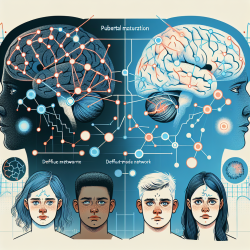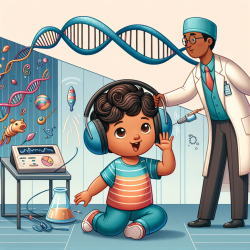Introduction
The journey through adolescence is marked by significant changes, both physically and mentally. A recent study titled "Pubertal maturation and sex effects on the default-mode network connectivity implicated in mood dysregulation" sheds light on how puberty and sex can influence brain connectivity, particularly the default-mode network (DMN), which is often associated with mood disorders. This blog aims to help practitioners leverage these insights to improve therapeutic outcomes for adolescents.
Key Findings from the Study
The study examined how puberty and sex affect the intrinsic functional connectivity (iFC) of the DMN, using a community sample of adolescents. The researchers found:
- Pubertal maturation is associated with weaker iFC in girls and stronger iFC in boys.
- Boys generally exhibited stronger iFC than girls, independent of puberty.
- Lower connectivity in the anterior cingulate seed predicted higher internalizing symptoms at a 2-year follow-up.
Implications for Practitioners
Understanding these findings can be pivotal for practitioners working with adolescents. Here are some actionable insights:
- Early Identification: Be aware of the signs of mood dysregulation, especially in girls, as they may be at higher risk due to weaker iFC during puberty.
- Personalized Interventions: Tailor interventions based on sex-specific brain connectivity patterns. For instance, strategies that strengthen connectivity might be beneficial for girls.
- Longitudinal Monitoring: Regularly assess mood and behavioral changes in adolescents, considering the long-term impact of iFC on mood disorders.
Encouraging Further Research
While this study provides valuable insights, it also opens avenues for further research. Practitioners are encouraged to explore:
- The role of other brain networks in mood regulation during puberty.
- Longitudinal studies to track the evolution of brain connectivity from adolescence into adulthood.
- Intervention studies to test the efficacy of therapies targeting specific brain connectivity patterns.
Conclusion
The study highlights the complex interplay between puberty, sex, and brain connectivity, offering a nuanced understanding of mood dysregulation in adolescents. By integrating these findings into practice, practitioners can enhance their therapeutic strategies, ultimately improving outcomes for young individuals navigating the challenges of adolescence.
To read the original research paper, please follow this link: Pubertal maturation and sex effects on the default-mode network connectivity implicated in mood dysregulation.










